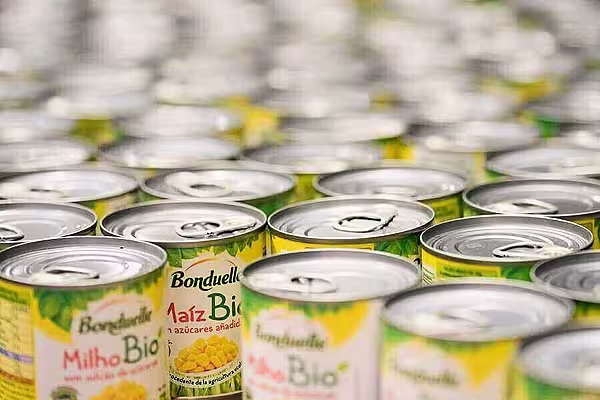It’s been a wild few weeks in the agriculture markets.
Floods in Argentina and drought in Brazil have sent futures markets from Chicago to Paris into a tizzy, with corn, soybean and wheat prices surging in the first half of last week before slumping back down.
While Louis Dreyfus Co.’s chief executive officer has said 2015 was defined by a lack of volatility, this year is shaping up to be more exciting. A 30-day measure of price swings for the Bloomberg Agriculture Subindex, a gauge of eight commodities, jumped to the highest since September on Monday. That’s a big change from earlier this year, when steadily declining prices for most crops left volatility at the lowest since December 2013.
Weeks of rain and flooding in Argentina prompted the third-largest soybean exporter’s agriculture ministry and its two biggest exchanges to cut their crop forecasts last week, citing damage to drenched crops. While there are now forecasts for drier conditions, uncertainty about the extent of the impact means volatile prices won’t go away anytime soon, said Matt Ammermann, a commodity risk manager at INTL FCStone in Plymouth, Minnesota.
All the weather excitement sent hedge funds and other large speculators running toward agriculture, especially soybeans, where money managers betting on lower prices as recently as March are now the most bullish in almost two years. Funds have the biggest combined wager on higher prices across 11 agriculture commodities since July, US Commodity Futures Trading Commission data show. They bought "massively" last week, said Arnaud Saulais, a broker at Starsupply Commodity Brokers in Nyon, Switzerland.
Soybeans ended last week with a gain, while the steepest two-day slide since August left corn with a weekly loss. US farmers are starting to plant spring crops and recent price swings could determine whether they’ll sow more soybeans or corn, according to US broker Allendale Inc.
Soybean futures for November delivery, which indicate the price expected at harvest, traded at almost 2.6 times the price of December corn on Friday, the most since 2014 for the two contracts. Corn tumbled to a 17-month low at the start of April after the US Department of Agriculture said farmers would expand planting, at the expense of soybeans, to the third-highest level since 1944. The USDA is scheduled to update its acreage forecast in June.
Although weather still risks damaging crops, last week’s rally may have been too much, too fast. Goldman Sachs Group Inc. said in a report Friday that it’s maintaining a bearish outlook on corn and soybeans because prospects are good for large US crops and the world still has ample supplies. Global grain inventories at the end of this season will probably be the largest in three decades, the London-based International Grains Council estimates.
News by Bloomberg, edited by ESM. To subscribe to ESM: The European Supermarket Magazine, click here.














